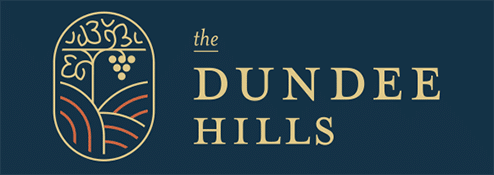Five Facts About Chardonnay That Will Impress Your Friends
With the weather warming, a glass of chilled Chardonnay on a sunny patio sounds like the perfect afternoon itinerary. This much-loved white wine is the ultimate shapeshifter depending on where it’s grown and how it’s made – ranging from crisp and dry in some regions to oaky and buttery in others. And it’s growing in prominence in the Dundee Hills. As Joseph V. Micallef noted, “Oregon’s Chardonnay production continues to soar, and is rapidly gaining a reputation as the next big thing to come out of the Oregon wine industry.”
We partnered with Spencer Spetnagel, the winemaker at Durant Vineyards to bring you five fun facts you may not know about Chardonnay:
- Chardonnay is the world’s most popular wine. And while we may be best known for Pinot Noir in the Dundee Hills, our Chardonnay production is gaining momentum and turning heads as a crisp and refreshing alternative to the oaky Chardonnays many are familiar with.
- There are three fermentation methods the winemaker can choose from when crafting Chardonnay: Ferment in stainless tanks giving complete control over the fermentation temperature, fermentation in barrels, and fermentation in concrete. The fermentation vessel makes a notable difference in the flavor profile of the final wine.
- A cool fermentation in a stainless tank will retain the most delicate aromatics and remain linear and laser-focused on the palate.
- A barrel fermentation will bring out oak tannins and will have more Lees contact, which leads to a wider array of flavors, aromas and texture to the finished product.
- A concrete fermentation falls between the stainless and barrel ferments: It won’t impart more flavors and aromas like the barrels, but will broaden the texture and weight of the wine. Similarly to stainless, it also highlights minerality and other delicate aromatics and flavors.
- After deciding on the fermentation vessel, the winemaker will begin the fermentation process of the pressed juice by inoculating it with either a wild yeast strain or a specific yeast strain. Wild yeasts typically lead to more complexity, but specific yeasts typically give a cleaner finish and allow winemakers to tailor pick which aromatic nuances they’d like to highlight. In short, the yeast a winemaker selects will strongly influence the final tasting notes of the Chardonnay. The next time you’re tasting wine in the Dundee Hills, make sure to ask if the winemaker used a wild or specific yeast strain so you can begin to recognize the differences between the two.
- When Lees (the dead yeast cells that precipitate out of the wine) are in contact with the wine, the acid and alcohol break down the yeast cell walls and extract mannoproteins. These mannoproteins add more weight and texture on the palate of the wine, which leads to the creaminess you can pick up in Chardonnay.
A wide array of Bâtonnage methods (stirring the Lees) are used throughout the wineries – ranging from absolutely no Bâtonnage to just letting the wine stay in contact with the surface of the Lees to daily Bâtonnage all the way to… daily Bâtonnage for the first month or three. There isn’t one pervasive method in the Dundee Hills, which leads to diverse and delicious tasting notes that differ immensely from one winery to the next. - Surface to volume ratio changes the impactfulness of the barrel characteristics and the Lees impact on a wine. Smaller barrels have more oxygenation during elevage (the process of grapes becoming wine) and also impart more oak into the final wine. Bigger barrels offer more Lees contact even without Bâtonnage, especially in a Cigare barrel, which is much longer in shape than a typical barrel.
Are you ready to add a few bottles of Dundee Hills Chardonnay to your wine cellar? We have three dozen Dundee Hills Winegrowers Association members who are eager to share their Chardonnays with you. With so much high quality wine at your fingertips, you can taste your way through the Dundee Hills all summer!
